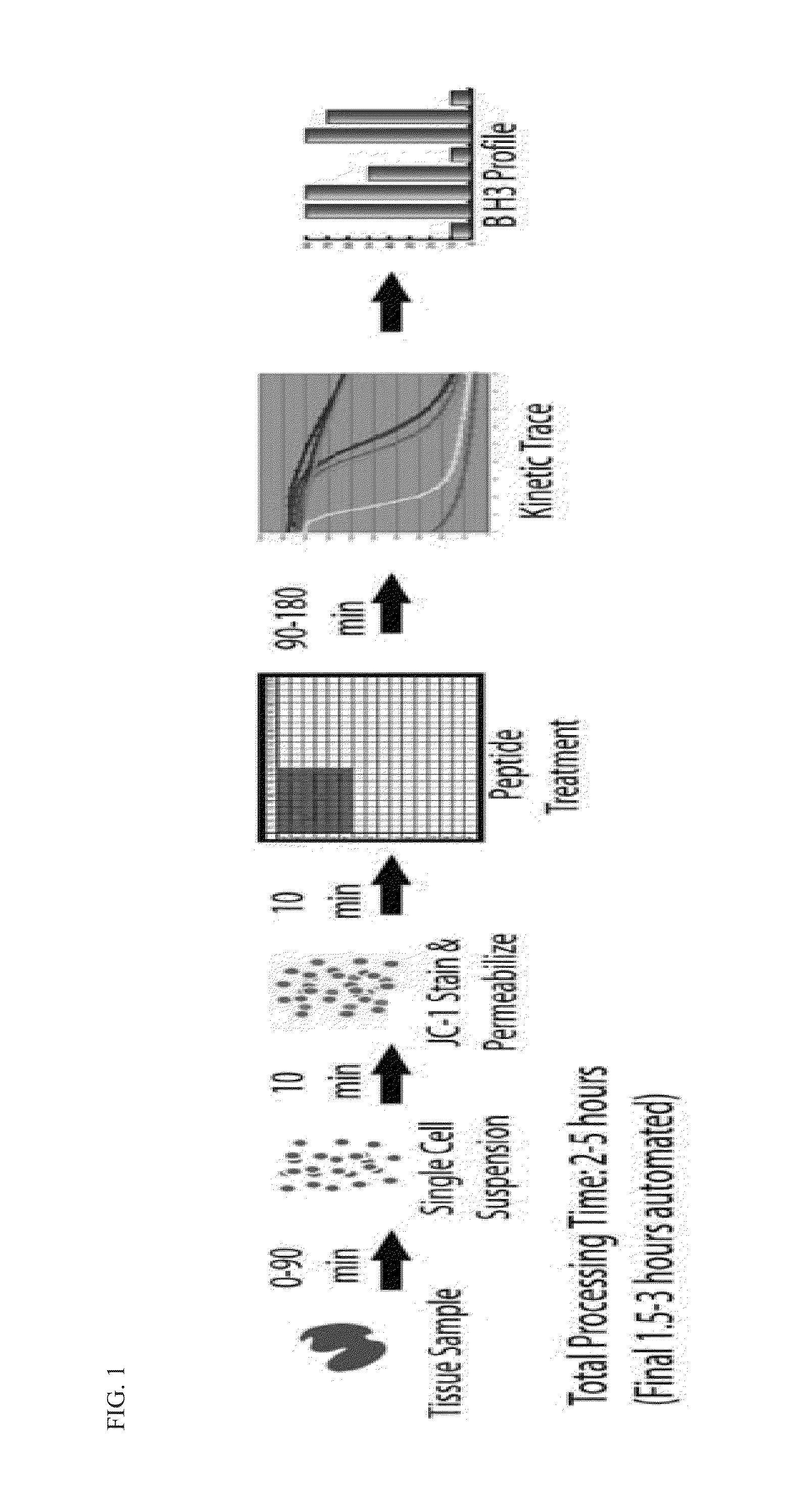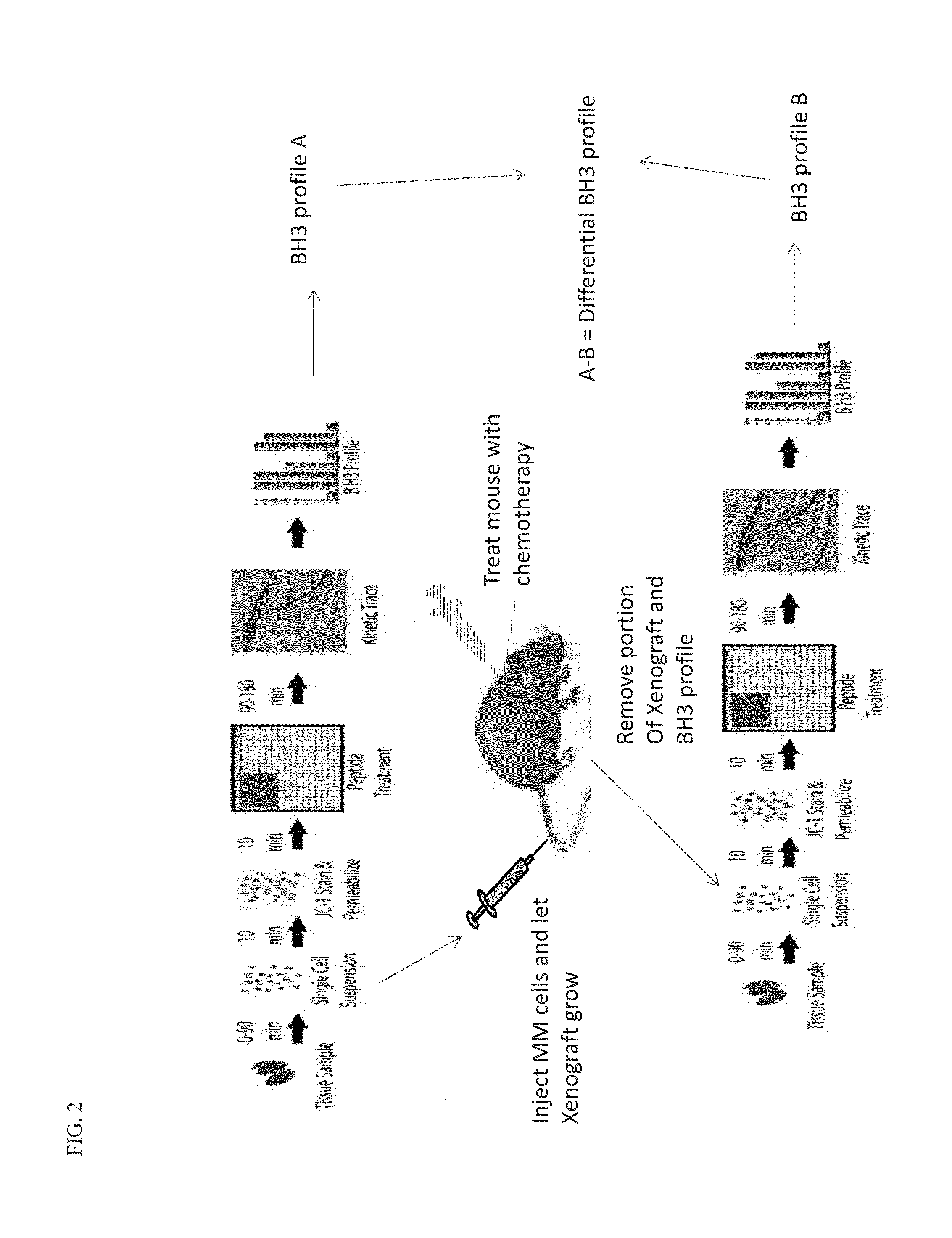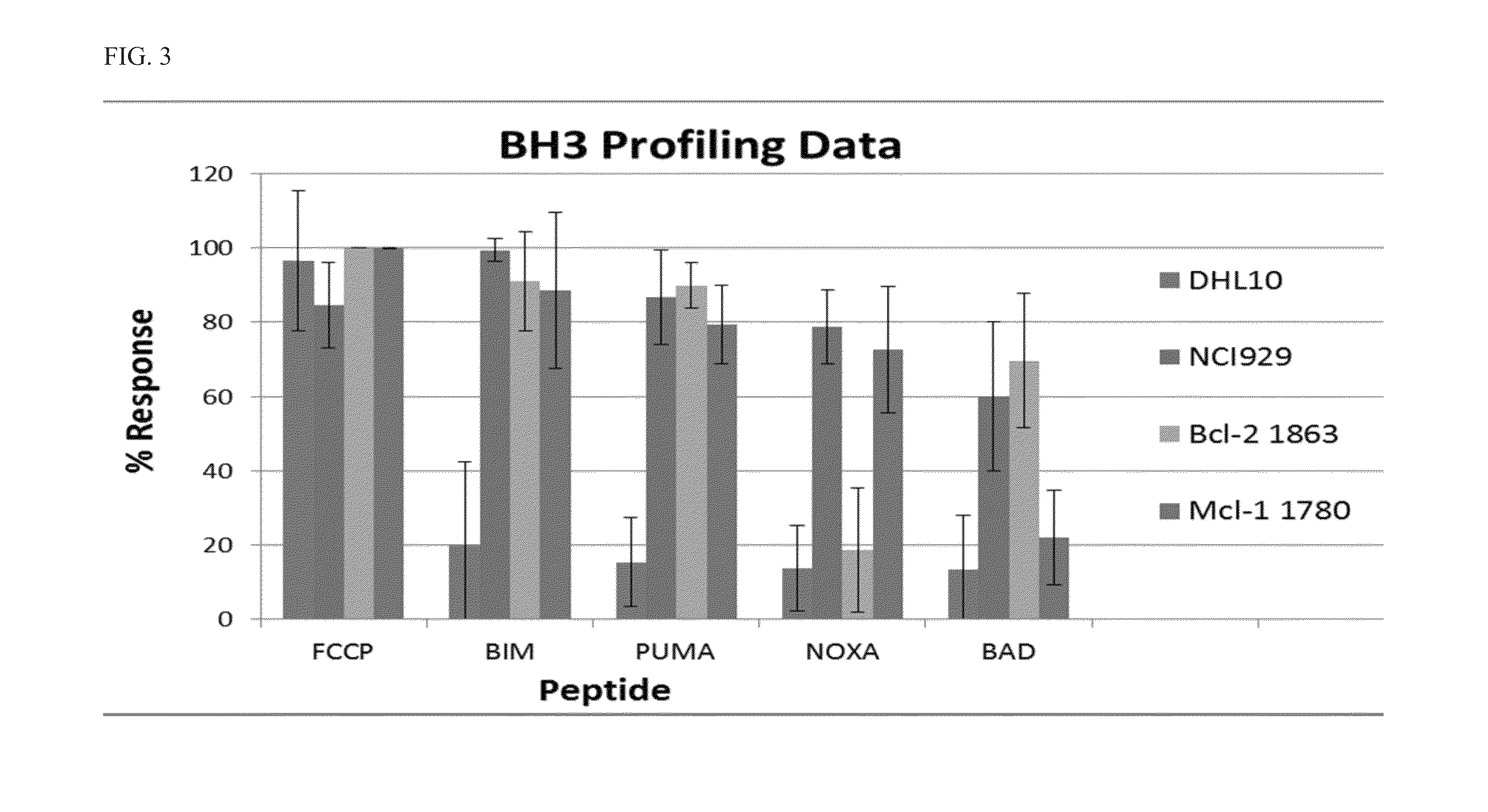Differential bh3 mitochondrial profiling
a technology of mitochondrial profiling and bh3 mitochondria, applied in the field of differential bh3 mitochondrial profiling, can solve the problems of largely ineffective chemotherapy, performance of chemotherapy, and often not closely matching selected treatment to individual patient's disease, so as to improve the correlation between percent priming and patient response, improve the effect of treatment effect and increase the range of perturbations
- Summary
- Abstract
- Description
- Claims
- Application Information
AI Technical Summary
Benefits of technology
Problems solved by technology
Method used
Image
Examples
example 1
Mitochondrial Profiling Assay
[0138]The mitochondrial profiling assay relies on the use of the sensitizer or activator BH3 domain peptides to probe cancer cell mitochondria. A mitochondrial response signature to any one or any class of BH3 peptide indicates a dependence on a particular anti-apoptotic Bcl-2 family protein. Peptides derived from the sensitizer proteins can induce apoptotic signaling in vitro, and each sensitizer protein has a unique specificity profile (Table 2). For example, two peptides (Noxa, Mule) interact only with Mcl-1, and thus cause permeabilization only in Mcl-1 dependent mitochondria. Bcl-2 (and Bcl-xL) dependent mitochondria display unique sensitivity to the BAD peptide. Other peptides such as Puma show broad spectrum affinity and their activity provides a general index of cell “priming” or Bcl-2 family dependence. These peptides, though poor in vivo drugs due to extremely poor pharmacologic properties, are excellent as in vitro probes for characterizing th...
example 2
Correlation of In Vitro Potency of Bcl-2 and Mcl-2 Inhibitors and Standard Chemotherapy to Mitochondrial Profiling Classification
[0150]Myeloma cell lines will be tested by the mitochondrial profiling assay as previously described. Cell lines fall into the following categories determined by mitochondrial profiling: (a) predominantly Mcl-1 primed (b) predominantly Bcl-2 / Bcl-xL primed or (c) poorly primed. Cells lines representative of each of these classifications have been engineered to express the GFP and Luciferase genes using the Lentrvirus infection as previously described. These cell lines will be tested for response to ABT-263, EU-4030, and EU-5148 as single agents or in combination with Bortezomib. Responsive and non-responsive cell lines will be monitored by the mitochondrial profiling assay before and after (in the case of non-responsive cell lines) treatment.
[0151]Cell Death Response to Bcl-2 or Mcl-1 Targeted Therapy:
[0152]Cancer cells collected from patients are determine...
example 3
Detection of Tumor Progression in Mice by Bioluminescence Imaging
[0154]Mice were injected with 75 mg / kg D-luciferin, anesthetized, and imaged 10 minutes after substrate injection. Total body luminescence was determined using a standardized region of interest encompassing the entire mouse using the Living Images software package (Caliper Life Sciences).
[0155]As shown in FIG. 5 a mean tumor burden reduction was observed after treatment with EU-5148, velcade, or a combination of the two compared with vehicle-only treatment. OPM2 / Luciferase cells were transferred to SCID mice and allowed to reach tumor burden. Xenografted mice were treated with EU-5148 (20 mpk IV, 3× / week), velcade for (1 mpk IV, 3× / week), or a combination of these treatments. We observed a mean tumor burden reduction of 63%, as measured by bioluminescence imaging, after 15 days EU-5148 treatment. The combination treatment of EU-5148 with Velcade results in 92% reduction in tumor cell burden over same time period.
PUM
| Property | Measurement | Unit |
|---|---|---|
| Molar density | aaaaa | aaaaa |
| Molar density | aaaaa | aaaaa |
| Concentration | aaaaa | aaaaa |
Abstract
Description
Claims
Application Information
 Login to View More
Login to View More - R&D
- Intellectual Property
- Life Sciences
- Materials
- Tech Scout
- Unparalleled Data Quality
- Higher Quality Content
- 60% Fewer Hallucinations
Browse by: Latest US Patents, China's latest patents, Technical Efficacy Thesaurus, Application Domain, Technology Topic, Popular Technical Reports.
© 2025 PatSnap. All rights reserved.Legal|Privacy policy|Modern Slavery Act Transparency Statement|Sitemap|About US| Contact US: help@patsnap.com



